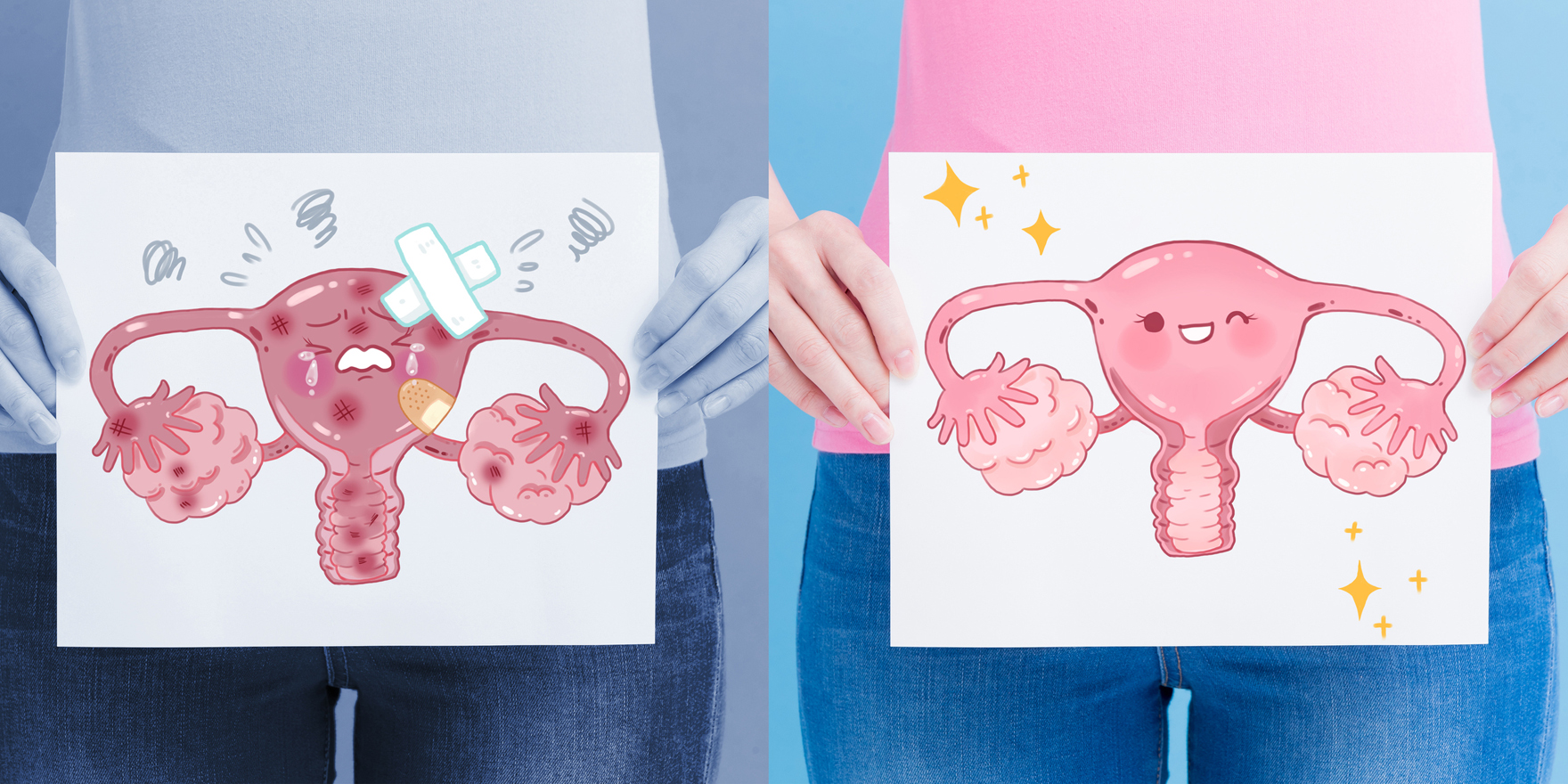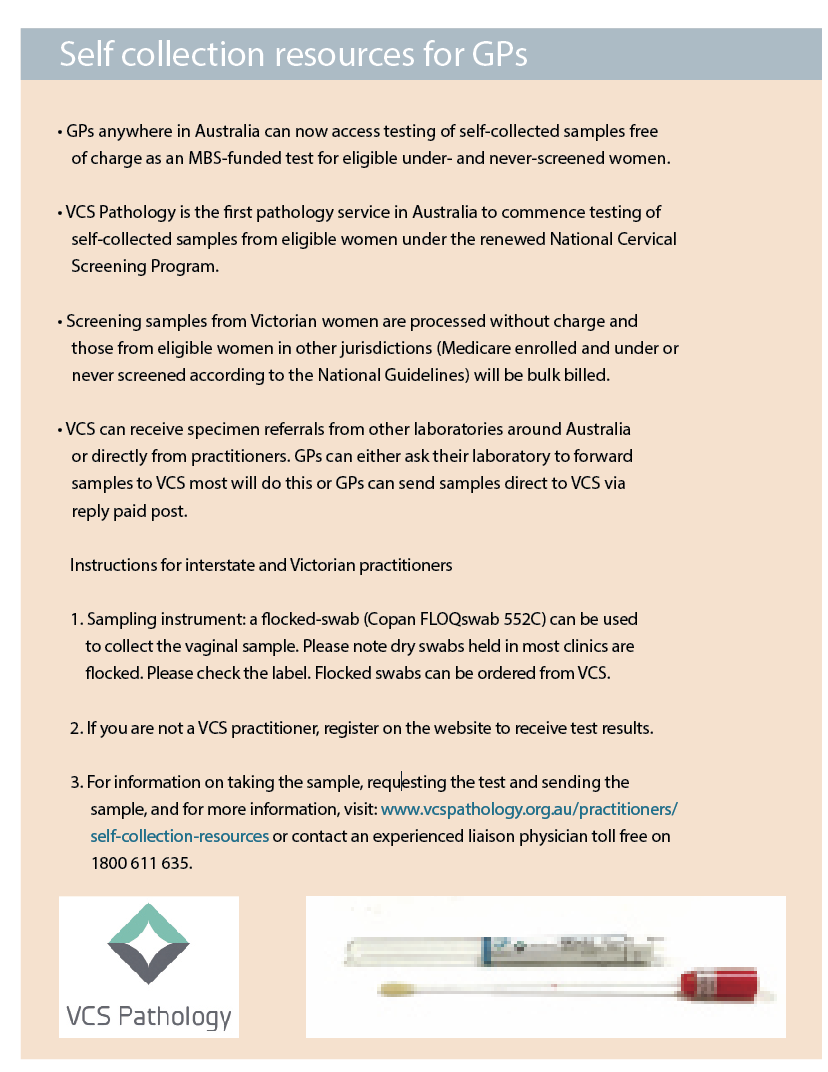GPs can now offer eligible women the option of taking their own vaginal HPV, writes Dr Lara Roeske
The renewed National Cervical Screening Program (NCSP) includes the new self-collection clinical management pathway for under or never screened women.1 This evidence-based pathway for cervical screening is set to improve participation rates and overcome barriers some women experience to having a speculum examination.
Overall participation in the previous Pap smear-based program was steadily decreasing and many women have been screening but at less than the previously recommended two-year interval.2 We know that the biggest risk factor for cervical cancer in Australia now is never having been screened or being under screened.3
Aboriginal and Torres Strait Islander women, women from culturally and linguistically diverse back grounds, rural or remote regions and experiencing socioeconomic disadvantage are over-represented among the under-screened.
Other groups of women presenting to general practice who may be under screened and eligible for self-collection include; older women, women with a previous negative Pap smear experience, HPV vaccinated women, same sex attracted women, transgender men and women who have experienced sexual violence and trauma. This pathway provides a timely strategy to prevent more cervical cancer by engaging more women in screening.
GPs can be reassured about the safety and effectiveness of self-collected samples for HPV testing.
The vaginal HPV test is sufficiently accurate, approaching the sensitivity and specificity of clinician collected samples and has the capacity to detect 14 oncogenic HPV types including partial genotyping for HPV types 16/18.4
Studies confirm that offering self-collection is likely to be acceptable to Australian women who have not been screened recently, and high rates of adherence to follow up have been reported in women with a positive HPV test result from a self-collected sample.5,6
Women will benefit by participation in cervical screening, especially if disease is detected and treated. GPs can reassure women with negative test results that they are at very low risk of cervical cancer if oncogenic HPV is not detected. These women can safely be invited to re-screen in five years, at this time a clinician collected sample is preferred.
At the cervical screening consultation GPs should initially offer a clinician collected sample (a vaginal speculum examination to visualise and sample from the cervix) and obtain verbal consent. However, if for any reason a speculum examination is declined, then the woman can be supported to take her own HPV sample if she is eligible.
To be eligible for self-collection women must be 30 years or older and be overdue for screening by two or more years, this means at least four years since the last Pap smear.
GPs should ask women if they can remember having a cervical screening test in the last four years, check their own practice’s medical records or the National Cancer Screening Register. Women who are pregnant or have symptoms (bleeding, discharge or pain) are not eligible for self-collection. Self-collection should be undertaken in a practice setting, it is not available as a take home or mail out kit.
Documenting the woman’s preferred method of contact, discussing how test results will be given and follow up requirements if oncogenic HPV (any type) is detected is recommended at the time of the consultation. GPs should carefully and sensitively explain the meaning and implications of having HPV detected. Women should be informed that the follow up appointment for positive test results may involve either a speculum examination or a referral for specialist investigation.
A PIP Cervical Screening SIP is available for taking a cervical screening test, clinician or patient collected, from a person who has not been screened in the last for four years.
The SIP will be paid to the medical practitioner who provided the service if the service was provided in a general practice participating in the PIP Cervical Screening Incentive.
A further PIP Cervical Screening Incentive payment is paid to practices which reach target levels of cervical screening for their patients aged 24 years and nine months of age to 74 years inclusive.
More detailed information on the PIP Cervical Screening Incentive is available from the Department of Human Services PIP enquiry line on 1800 222 032 or from the Department of Human Services website.
Dr Lara Roeske is Director, Education and Liason Services, at VCS Pathology, and a member of the Cancer Council Australia Cervical Cancer Screening Guidelines Working Party
References:
1. Cancer Council Australia Cervical Cancer Screening Guidelines Working Party. National Cervical Screening Program: Guidelines for the management of screen-detected abnormalities, screening in specific populations and investigation of abnormal vaginal bleeding. Sydney: Cancer Council Australia.https://wiki.cancer.org.au/australia/Guidelines:Cervical_cancer/Screening
2. Australian Institute of Health and Welfare. Cervical screening in Australia 2012–2013. Cancer series no. 93. Cat. no. CAN 91. Canberra: AIHW; 2015 Available from: http://www.aihw.gov.au/WorkArea/DownloadAsset.aspx?id=60129550872.
3. Victorian Cervical Cytology Registry. Statistical Report 2013. Carlton South: The Victorian Cervical Cytology Registry(VCCR); 2013 Available from:http://www.vccr.org/site/VCCR/filesystem/documents/dataandresearch/StatisticalReports/VCS_StatisticsReport_2013
4. Arbyn M, Castle PE. Offering Self-Sampling Kits for HPV Testing to Reach Women Who Do Not Attend in the Regular Cervical Cancer Screening Program. Cancer Epidemiol Biomarkers Prev 2015 May; 24(5):769-72 Abstract available at http://www.ncbi.nlm.nih.gov/pubmed/25713024
5. Smith M, Lew JB, Simms K, Canfell K. Impact of HPV sample self-collection for underscreened women in the renewed Cervical Screening Program. Med J Aust 2016 Mar 21; 204(5):194 Abstract available at http://www.ncbi.nlm.nih.gov/pubmed/26985849.
6. Mullins R, Scalzo K, Sultana F. Self-sampling for cervical screening: could it overcome some of the barriers to the Pap test? J Med Screen 2014 Dec; 21(4):201-6 Abstract available at http://www.ncbi.nlm.nih.gov/pubmed/25312640.
7. Self-collection Pilot Project improving access to cervical screening for under screened women at http://www.vcs.org.au/publications/scientific



